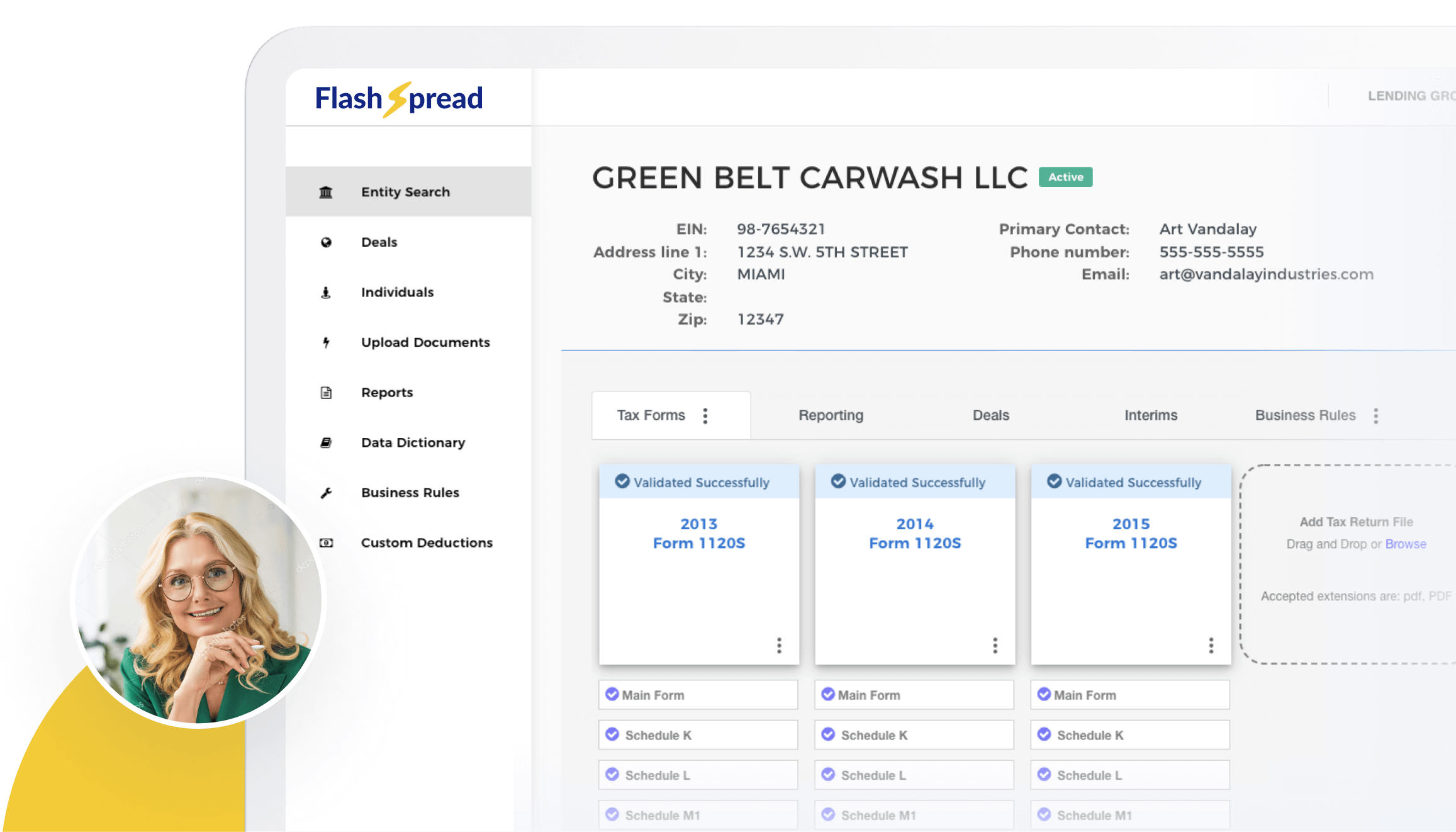Spreading tax returns is a necessary but painstaking process for commercial lenders. For decades, underwriters spread returns manually by transferring a company’s financial records from paper documents to spreadsheets. And due to the amount of data involved in commercial tax returns, lenders would have to spend countless hours “spreading” and analyzing returns to get a clear picture of a company’s health.
The good news is commercial lending software has progressed and a new era of automation has dawned on tax spreading – making manual entry obsolete. In this article, we’ll teach you the ins and outs of automated tax return spreading, so you can spare your team hours of tedious labor.
Table of Contents
Tax Returns Challenges Facing Underwriters
As a commercial underwriter, you need to examine a ton of financial data to make an informed decision regarding a business loan. This typically includes:
- 3 years of tax returns for the primary borrower
- 3 years of tax returns for every affiliate guarantor
- If the company is a franchise, you’ll need to spread returns for every franchise
We don’t need to tell you how long this process can take, or that it doesn’t always result in a loan being made – which amounts to wasted time and money. In addition to this, the time it takes to make a decision could mean losing a potential qualified customer to another lender. In short, whether or not you decide to issue a loan, it is best practice to make an informed decision quickly.
But the difficulties commercial lenders face don’t end with underwriting. When you decide to proceed with a commercial loan, there then comes an annual review process. Every year, the servicing or portfolio team needs to obtain the updated financials for everyone involved in each loan in your portfolio. Depending on the size of your institution, you could have thousands of loans. With traditional underwriting and spreading models, this could require a whole team of dedicated employees working full time.
Turn Docs Into Data, and Data Into Decisions
With automated tax return spreading, data is digitized and instantly transferred from a borrower’s tax returns into a financial spreading platform. The platform renders this data visible, so lenders can easily access and analyze it.
Subscribe to BeSmartee 's Digital Mortgage Blog to receive:
- Mortgage Industry Insights
- Security & Compliance Updates
- Q&A's Featuring Mortgage & Technology Experts
Here is how it works:
- Upload data to the FlashSpead platform
- Upload scanned copies of the tax returns
- Drag and drop the files into the FlashSpread platform
- FlashSpread will automatically populate information with a combination of OCR, AI and proprietary algorithms
- The software will also alert you to mistakes or missing information, making remediation quick and easy
 2. Use analytics tools to generate reports on:
2. Use analytics tools to generate reports on:
- Cashflow
- Balance sheets
- Income statements
- Entity cashflow
- Individual cashflow
- Global analysis
 Each of these tools can come standard or be customized with an easy-to-use no-code software. And by automating calculations, you can generate an accurate debt service coverage ratio (DSCR) in minutes instead of hours. Automated spreading software will also spare you the cost of a full time servicing team to conduct annual reviews.
Each of these tools can come standard or be customized with an easy-to-use no-code software. And by automating calculations, you can generate an accurate debt service coverage ratio (DSCR) in minutes instead of hours. Automated spreading software will also spare you the cost of a full time servicing team to conduct annual reviews.
Stop Wasting Time, Start Making Loans
Automated spreading software exponentially speeds up the commercial lending cycle. Doing so reduces operational costs and enables your employees to focus on generating more business. Your customers will also thank you for not having to anxiously wait for a decision.
Commercial lenders are rushing to adopt automated spreading to boost efficiencies and customer satisfaction. For more information on FlashSpread’s automated tax return spreading platform, schedule a demo with one of our specialists today!




